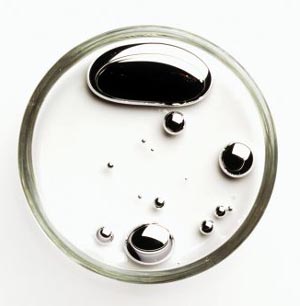
Introduction
Rasa-Shastra, popularly known as Indian alchemy or Latrochemistry is important subjects of Ayurvedic curriculum. History of Rasa Shastra can be traced to pre-Vedic period, where metals were successfully employed in treatment of various diseases. Ayurveda uses drugs of diverse origins in formulations ranging from herbals to metals. Formulation can be poly-herbal, poly-mineral and herbo-mineral. Rasa Shastra and Dravyaguna are interdisciplinary subjects and they supplement each other. Rasa medicines are widely prescribed by Ayurvedic physicians with amazing results. Use of mercury, copper and gold in treating diseases is documented since times immemorial.
Bhasma of Metals
Ayurvedic theory attributes important therapeutic roles to metals such as mercury and lead. Ayurveda experts estimate that 35% to 40% of the approximately 6000 medicines in the Ayurvedic formulary intentionally contain at least 1 metal. Metal-containing Ayurvedic herbal medicine product are purportedly “detoxified” through multiple heating/cooling cycles and the addition of specific herbs.
The heavy metals in elemental form are toxic but those in compound form i.e. bhasma are safe for humans. Bhasma are prepared from various metals, metal mixtures and alloys. According to Indian alchemy, bhasma prepared, evaluated and therapeutically used are absolute safe to humans.

Rasa Medicines in Clinical Practice
Aamvatari rasa : Main ingredients are mercury, Zingiber officinale, Picrorrhiza kurroa, Triphala (combination of Terminalia chebula, Terminalia belerica and Emblica officinalis), Cassia fistula (fruit pulp) and Ricinus communis. It is used in the treatment of rheumatism. The formulation is written in Bhavpraksha Nighantu.
Anandbairava rasa : Herbo-mineral preparation used in the treatment of fevers.
Arogyavardhini vati (rasa ): Herbo-mineral preparation used in the treatment of liver diseases. Modern investigations have demonstrated the formulation to be hepatoprotective.
Basant maliti rasa : Main ingredients are ash of gold, ash of pearl, cinnabar, Piper nigrum, zinc oxide and expressed juice of Citrus limon. It is given with powder of Piper longum and honey. It is used in the treatment of chronic fevers and tuberculosis.
Chandraprabha vati (Chandraprakash rasayana) : Main ingredients are Psoralia corylifolia, Acorus calamus, Cyperus rotundus, Swertia chiryata, Tinospora cordifolia, Cedrus deodara, Curcuma longa, Aconitum heterophyllum, Berberis aristata, Piper longum, Piper nigrum, Zingiber officinale, Cassia acutifolia, potassium bicarbonate, black salt and salt obtained from sea source. It is used in the treatment of urinary diseases, polyuria, calculus, anuria, dysuria, constipation, flatulence, colic, gonorrhoea, pyuria, tumour, enlarged testicles, anemia, jaundice, hernia, lumbago, cough, asthma, dermatitis, skin diseases, haemorrhoids, pruritis, enlarged spleen, fistula-in-ano, menorrhagia, seminal diseases, loss of appetite and debility.
Dhatri lauha : Main ingredients are Piper longum, Piper nigrum, Zingiber officinale, ash of iron and Curcuma longa. It is used in the treatment of peptic ulcer, gastritis and anaemia.
Hinguleshavara rasa : Chief ingredients are Piper longum, cinnabar and Aconitum ferox. It is used in the treatment of fevers. It is given with juice of Zingiber officinale and honey.
Kaishor guggul: Main ingredients are Commiphora mukul, Terminalia chebula (bark), Terminalia belerica (bark), Emblica officinalis, Tinospora cordifolia, Embelia ribes, mercury, Ipomoea turpetheum and sulphur. It is used in the treatment of gout, skin eruptions, skin ulcer, cough, leprosy, gonorrhea, abdominal diseases, anemia, polyuria and dyspepsia. The formulation is given along with Manjisthadi quatha as vehicle. Exposure to sunlight and fire, oil and sour foods and intercourse are contraindicated with this formulation.
Punarnavadi mandoora : Chief ingredients are Boerhavia diffusa, Ipomoea turpetheum, Zingiber officinale, Piper longum, Piper nigrum, Embelai ribes, Cedrus deodara, Plumbago rosea, Inula racemosa, Terminalia chebula, Terminalia belerica, Emblica officinalis, Curcuma longa, Beberis aristata, Baliospermum montanum, Piper chaba, Holarrhnea antidysenterica, Picrorhiza kurroa and Cyperus rotundus, mandoora (rust) and cow-urine. It is given with buttermilk. It is useful in anaemia, jaundice, oedema and haemorrhoids.
Yograja guggul : Main ingredients are Zingiber officinale, Piper nigrum, Piper chaba, Ferula asfoetida, Trachyspermum ammi, Brassica campestris, Cuminum cyminum, Vitex negundo, Holarrhena antidysenterica, Butea monosperma, Embelia ribes, Picrorhiza kurroa, Aconitum heterophyllum, Clerodendron serratum, Hyosyamus niger, Cedrus deodara, Sausurrea lappa, Pluchea indica, Cyperus rotundus, Rock salt, Elettaria cardamomum, Tribulus terrestris, Terminalia chebula, Terminalia belerica, Coriander sativum, Emblica officinalis, Cinamomum cassia, Vetiver zizionoides, potassium bicarbonate and Commiphora mukul. It is indicated in arthritis, rheumatism, malaria, abdominal pain, dyspepsia and seminal diseases.
